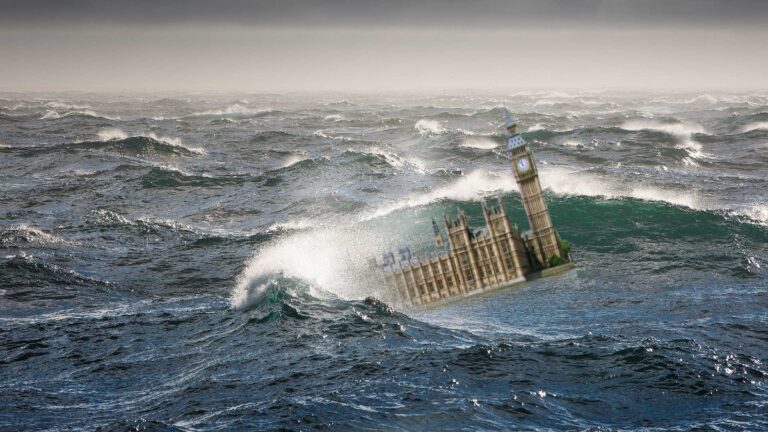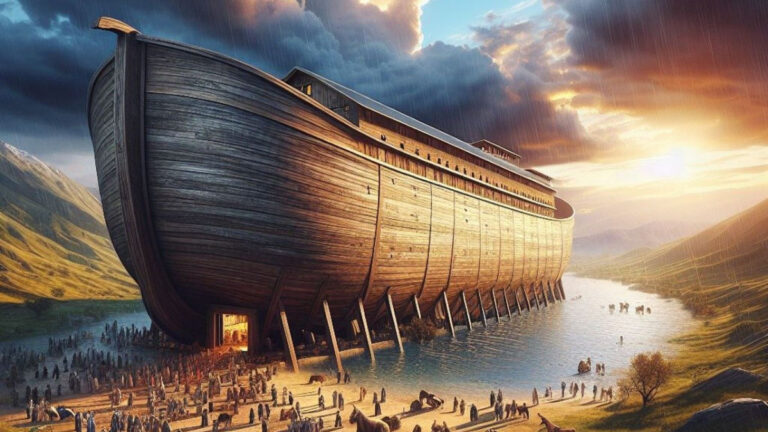Can we know the truth about God?
. . . continued
Likening disturbed, discontented, self-seeking mankind in general to the restless sea, John proceeds to say:
“And it [that is to say, the fiery-coloured dragon] stood still upon the sand of the sea. And I saw a wild beast ascending out of the sea, with ten horns and seven heads, and upon its horns ten diadems, but upon its heads blasphemous names. Now the wild beast that I saw was like a leopard, but its feet were as those of a bear, and its mouth was as a lion’s mouth.
And the dragon gave to the beast its power, its throne, and great authority. And I saw one of its heads as though slaughtered to death, but its deathstroke got healed, and all the earth followed the wild beast with admiration. And they worshipped the dragon because it gave authority to the wild beast, and they worshipped the wild beast with the words, ‘Who is like the wild beast, and who can do battle with it?’… and authority was given it over every tribe, people, tongue, and nation. And all those who dwell on the earth will worship it.”
—Rev. 13:1-8.
The Beast’s Identity
The question “Who is like the wild beast?” prompts us to examine what this symbolic creature represents. From John’s detailed description and the beast’s actions, its identity becomes clear.
Prophetic Interpretation
The wild beast’s role throughout Revelation indicates it symbolises the worldwide system of political rule over humanity. Its hybrid appearance—leaflet-like with bear’s feet and a lion’s mouth—reflects how the global political system has manifested through various governmental forms across time and locations.
Biblical Connection
This imagery connects with the prophet Daniel’s vision, recorded at Daniel 7:1-18, where he witnessed a succession of beasts emerging from a turbulent sea: first a lion-like beast, then a bear-like beast, followed by a leopard-like beast. Daniel received explicit confirmation that these beasts represented political powers that would dominate the earth as superpowers.
Symbolic Meaning
The composite nature of John’s beast, combining features of multiple creatures, symbolises the worldwide political system expressing itself through diverse governmental forms throughout history. This unusual combination of features in a single beast effectively represents the complex nature of human political dominion.
Universal State Worship
While the details of John’s inspired vision are numerous, our focus centres on a crucial element: the “wild beast” emerging from the sea received worldwide worship, treated as an invincible god. This symbolic worship of the political State as a deity simultaneously represented worship of a higher power behind the State.
The Higher Authority
The vision reveals this higher power as the dragon-like Satan the Devil, portrayed as the source of the political State’s authority, power, and governmental throne. This aligns with Jesus’s description of Satan as:
“. . . the ruler of this world”
—John 14:30; 16:11
and Paul’s reference to him as:
“. . . the god of this system of things”
—2 Corinthians 4:4
Modern Implications
This understanding raises important questions for those who claim to worship nothing. Even those professing atheism, such as Communists, often demonstrate State worship. While they might deny this, their true allegiance becomes evident during national crises, international conflicts, or threats to national sovereignty.
Actions Reveal Truth
The response of such individuals during times of national crisis reveals their true object of worship, regardless of their verbal denials. Their actions speak more truthfully than their words, exposing what they truly regard as divine.
Rising Nationalism and Divine Worship
Today, nationalism runs rampant throughout the Earth. Whether religious or not, everyone faces the personal question: Whom or what do I worship? Behind the worldwide political system lurks an invisible power—the dragon-like Satan the Devil—who craftily attempts to compel Earth’s inhabitants to worship him through his protégé, the political state.
However, such worship proves futile, as he will soon be exposed as a false god. The true God of the universe, however, cannot be discredited. Do we sincerely desire to worship this One? Time for our decision grows short.
The political elements of this world, in particular, must make their final choice. It will prove devastating for them if they definitively ask, “Who is that One that all, including us politicians, should worship Him?”
Historical Parallels in Ancient Egypt
We have history to guide us towards the right decision. Today’s political rulers and their patriotic supporters would do well to consider the case of an ancient political leader who posed just such a question. This was the Pharaoh who ruled in the late 16th century, before our Common Era.
The matter arose when two brothers, Moses and Aaron, along with other Israelite elders, confronted him. The identity of the true God was being put to the test. Through Aaron as spokesperson, Moses declared to Pharaoh:
This is what Jehovah the God of Israel has said: ‘Send my people away that they may celebrate a festival to me in the wilderness.'”
If this Pharaoh, like his predecessors, considered himself divine, he showed no inclination to surrender his claimed godship in submission to the God of those whom he unjustly enslaved.
Pharaoh’s Defiant Response
His challenging reply came swiftly: “Who is Jehovah, so that I should obey his voice to send Israel away? I do not know Jehovah at all, and, what is more, I am not going to send Israel away.”
—Exodus 5:1, 2; 3:18, 19







